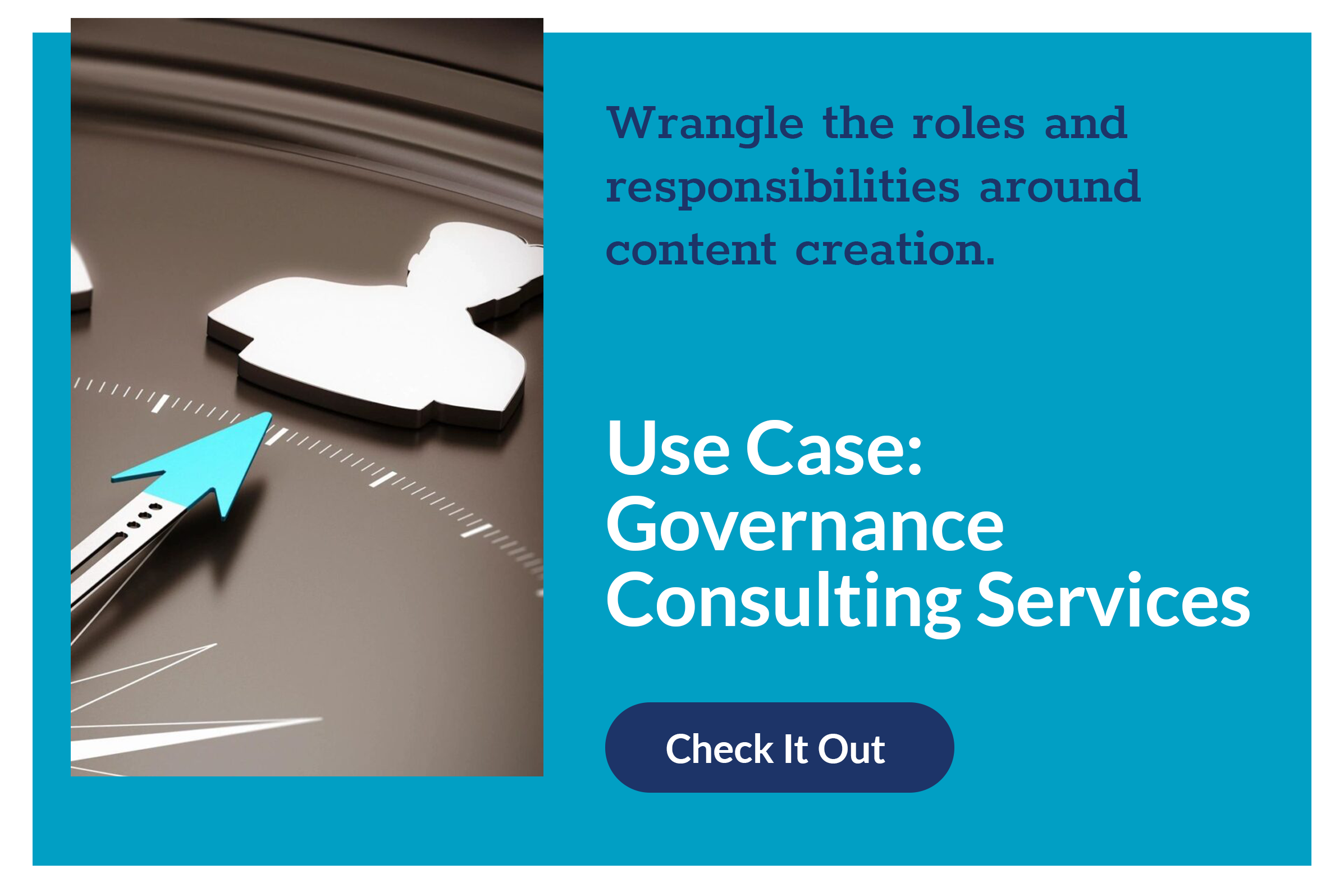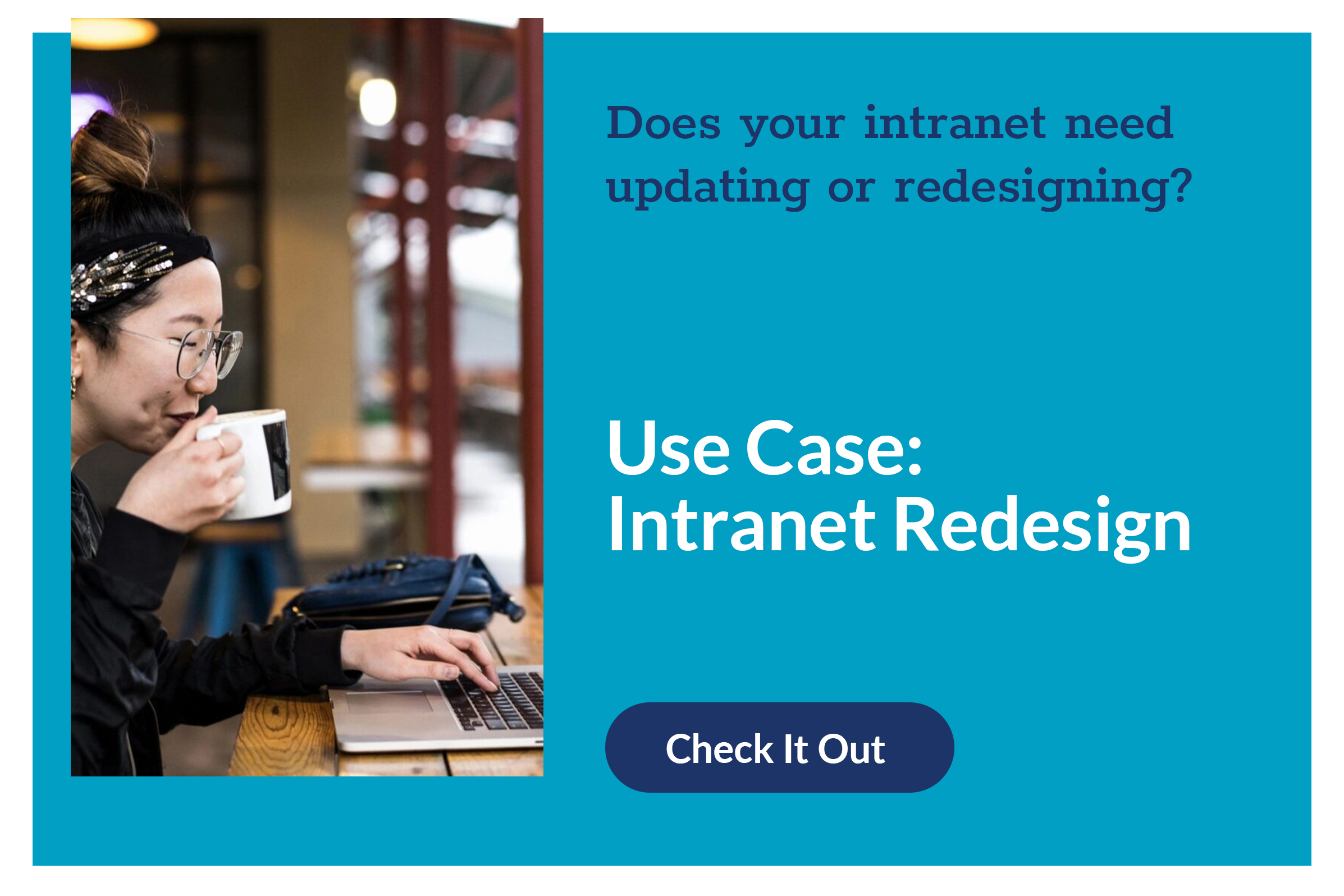A good intranet is a real gem for employee communications. But a mediocre intranet is often an ignored digital wasteland that sucks up time of the communications and intranet teams and results in significant lost opportunity.
According to the latest Edelman report, a company of 10,000 employees with a poorly designed intranet loses an estimated $15 million per year in lost productivity.
When undergoing an intranet redesign, update or upgrade, you’ll want to avoid these five common mistakes:
Mistake #1: No clear strategy
Having a strategy that everyone agrees on sounds like it should be Intranet 101. However, it’s amazing how common this key part of the project gets short shrift in an effort to move quickly or simplify an upgrade an existing intranet platform.
However, the purpose of a strategy is not only to provide a clear roadmap for the project, but to also build consensus around that roadmap and underlying vision. Otherwise, these projects have a way of easily veering off course - mainly due to everyone following their own roadmap, unaware that theirs is different from all the others.
It’s also important to make sure there’s a clear timeline as part of the strategy to help everyone align in terms of expectations, time, and cost. If your in-house team doesn’t have experience, an outside consultant can help advise on realistic cost and time projections and keep everyone informed and on course.
Mistake #2: Assumptions
It’s remarkable how many subconscious assumptions people make when it comes to working on improving the intranet. Ask ten people how a new, better intranet will act, look and feel, and you’ll get ten entirely different answers. This is simply because people don’t have a point of reference for a new, modern intranet that is fundamentally different from the one they have now.
In fact, one of the biggest challenges is that the term “intranet”, which is often used to describe an old, antiquated website that has little semblance to the new, modern, multi-channel digital workplaces of today. Terminology has not kept up with technology; the terms “Intranet 2.0 or Intranet 3.0” never took hold and the phrase "digital workplace" is can include the intranet plus a host of tools and solutions.
Two key tools to avoid incorrect assumptions:
#1: Use a real, working solution to explain and showcase the new intranet before it’s launched
Because the new intranet is a multi-channel communications tool - and a lot more than a browser, website or series of web pages - using old techniques (wireframes, static mock ups) to illustrate and work through problem solving, get input, and gain buy-in, simply doesn’t work anymore.
You need to use a live, functional prototype or MVP (minimum viable product) to show colleagues the new multi-channel, multi-dimensional user experience, rather than tell someone what it will look and act like. The good news is that most of today’s modern intranet platforms make this economically and technically possible.
Not only is the old adage true: a picture is worth a thousand words - in this case… a working model is worth a million pictures. Creating an MVP will actually save you a ton of time and cost, while dramatically improving people’s ability to envision what the new intranet can do and how they can embrace change.
#2: Agile, testing and feedback.
Once the initial prototype or MVP is in place, the best bet is to let content managers have a go at it as you iterate. This way they can get hands-on familiarity functions, ask for features that may be slated for future phases, and figure out processes before the intranet goes live.
Mistake #3: Assuming the Intranet is an IT Project
It’s all too common for senior management to view the intranet as primarily a technology undertaking, and for companies to rely on developers as the primary consultants. While these skills are certainly a part of the requirement, you should consider hiring experienced intranet consultants who not only know the technology capabilities and can handle development and configuration, but will also help you work through all the details of what matters to the business, impacts on process and communications, and the implications for change management.
Finding a consultant that knows the communications and employee experience perspective, as well as having deep technical expertise will be far more productive, save a ton of time, vastly reduce risk and finger pointing, and ultimately save you a lot of money.
Mistake #4: Using old governance models for new intranets
Simply put, governance is a fancy term for ‘who does what, when’. The key to figuring out this puzzle is keeping in mind a few important factors:
- What people are doing now will change based on the new capabilities of the intranet (more channels, more content, more automation, far less technical development)
- What people will be doing during the pre-launch phase is very different from after launch.
- What people will be doing during-post launch of Phase 1 is different from Phase 2, Phase 3, etc.
- As the intranet evolves, the teams that were created to manage and innovate need to evolve as well.
 It’s easy to see why governance of the intranet is complex and can be unclear - and why most companies wait until the new intranet is launched to even begin to think about changes to roles and responsibilities. The big risk of this approach is the inability to sustain the new intranet shortly after launch.
It’s easy to see why governance of the intranet is complex and can be unclear - and why most companies wait until the new intranet is launched to even begin to think about changes to roles and responsibilities. The big risk of this approach is the inability to sustain the new intranet shortly after launch.
Think about all the lost opportunities - employees and management are all fired up over the new intranet they’ve just seen for the first time. Yet the intranet team is likely to be exhausted from living through the initial effort, and is often ill-equipped to deal with the quickly evolving needs of the enthusiastic user base.
The best approach - as challenging as it may seem - is to take time during the pre-launch effort to rethink, or at the very least, review roles and ask:
- Who will manage content?
- What channels can be added? Removed? Replaced?
- What are the implications of making these changes?
- Who will approve and publish content now that most of the technical aspect of content management has been eliminated?
- What will the approval workflows look like?
- Who will manage audience and security groups and permissions?
- Should you create or reorganize any groups?
- What legacy processes and practices no longer serve their purpose?
We recommend creating a resource site instead of documents that incorporate training and governance in a single place. Their idea is to combine “how to” (training) with “how should” (governance) so that when your intranet users visit your user resource destination, they understand both “why” and “how” your intranet is designed and governed the way you have implemented.
Mistake #5: Waiting until the last minute or not having an launch and engagement plan
It’s tempting, once you have approval, to simply “turn on” the intranet and let it fly. But what’s the good of having a new intranet if no one knows about it? Too often employee communicators struggle with engagement.
There are three components to successfully driving intranet engagement: Content strategy, employee engagement tactics, and metrics and analytics. And all too often the last item - analytics - is left until the end, and then dropped.
Content strategy means that all the information that’s created, curated, and promoted on the new intranet supports and complements the vision of the company as a whole.
Some questions to consider include:
- What channels will you use for which content, when and how?
- Where does the intranet fit in with the digital landscape?
- How should content be segmented by audience type, location, group, etc.?
- Who will manage planning and execution of subsequent phases as the intranet continues to evolve?
Most intranets are judged by how well they engage employees. The best intranet in the world isn’t worth anything if no one sees the content, or nobody is tracking data on it. Driving employee adoption of the intranet content is an ongoing effort, and requires some out-of-the-box thinking.
For more on this topic, head to this blog on engaging employees with your intranet content.
Finally, putting all the effort into engaging employees is worthwhile when you don’t know how well your intranet is doing, and you’re unable to make adjustments based on usage data. You should, in a good updated intranet, be able to view and act on metrics like user behavior on various channels, open rates, time spent on pages, links clicked, videos watched, surveys completed, page referrals, etc.
In summary, if you have a clear intranet strategy, watch out for assumptions and miscommunication, don't assume IT will know what to do, rethink your governance and plan for the phase after the intranet is turned on, your project will shine.
Questions? Contact us at info@velaku.com. We'd love to hear from you.





